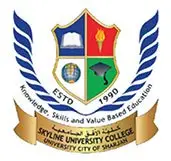
The Convergence of AI and IoT: Shaping the Future of Smart Systems
- [printfriendly]
The rapid advancement of Artificial Intelligence (AI) and the Internet of Things (IoT) [1] is transforming industries and everyday life. The integration of these two powerful technologies, often referred to as AIoT (Artificial Intelligence of Things) [2], is driving innovations in smart homes, healthcare, industrial automation, and more. This article explores how AI and IoT converge to create intelligent, data-driven ecosystems.
The Role of IoT in Data Collection
IoT devices, embedded with sensors and communication modules, generate massive amounts of real-time data. These devices range from wearable fitness trackers and smart home assistants to industrial sensors in manufacturing plants. The primary function of IoT is to collect, transmit, and sometimes process data locally to facilitate automation and decision-making. However, the sheer volume and complexity of IoT-generated data require intelligent systems to extract meaningful insights. This is where AI plays a crucial role.
AI-Powered IoT: Enhancing Decision-Making
AI enhances IoT by enabling devices to analyze data and make intelligent decisions without human intervention. Machine learning (ML) algorithms process IoT data to identify patterns, detect anomalies, and optimize operations. For instance, AI-driven predictive maintenance in industrial IoT (IIoT) [3] helps detect potential failures in machinery before they occur, reducing downtime and maintenance costs.
Another significant application of AIoT is in smart cities. AI analyzes traffic patterns from IoT-enabled traffic sensors to optimize signal timings and reduce congestion. Similarly, AI-driven energy management systems in smart buildings adjust lighting and climate control based on occupancy patterns, leading to energy savings and sustainability.
AIoT in Healthcare: Transforming Patient Care
One of the most promising applications of AIoT is in healthcare [4]. AI-driven IoT solutions are revolutionizing patient monitoring, diagnostics, and treatment. Wearable devices equipped with sensors collect real-time health data such as heart rate, oxygen levels, and blood pressure. AI algorithms analyze this data to detect early signs of medical conditions, enabling timely intervention and personalized treatment plans.
Smart hospitals are also leveraging AIoT for operational efficiency. AI-powered IoT systems track medical equipment, monitor patient vitals, and optimize resource allocation. For instance, AI-driven predictive analytics can help hospitals anticipate patient admission rates, ensuring adequate staffing and inventory management. Additionally, robotic-assisted surgeries powered by AIoT enable precision and reduce human error, improving patient outcomes.
Telemedicine is another area benefiting from AIoT integration. AI-powered virtual assistants and remote monitoring devices facilitate real-time consultations and diagnostics, bridging the gap between patients and healthcare providers. As AIoT continues to evolve, it has the potential to enhance medical research, drug discovery, and personalized healthcare solutions.
Challenges in AIoT Implementation
Despite its benefits, AIoT faces several challenges. One major concern is data security and privacy. With a vast network of connected devices, securing sensitive data from cyber threats is critical. Additionally, AIoT systems require robust computing infrastructure, often relying on cloud computing and edge computing [5] for efficient processing. The need for seamless interoperability between various IoT devices and AI models is another challenge, as different manufacturers use diverse protocols and standards.
The Future of AIoT
The future of AIoT looks promising, with advancements in edge AI, federated learning, and 5G technology enhancing its capabilities. Edge AI enables AI models to run directly on IoT devices, reducing latency and improving real-time decision-making. Federated learning allows AI models to train on decentralized data sources without compromising privacy, making it ideal for applications in healthcare and finance.
Moreover, the rollout of 5G networks will significantly boost AIoT by providing ultra-fast, low-latency connectivity, essential for real-time applications like autonomous vehicles and remote robotic surgeries.
Conclusion
The integration of AI and IoT is revolutionizing industries and everyday experiences. AI-powered IoT systems enhance automation, efficiency, and decision-making across various sectors, from healthcare and manufacturing to smart cities and home automation. However, addressing challenges related to security, interoperability, and computing power is essential for widespread adoption. As AIoT continues to evolve, it holds immense potential to drive innovation and improve the quality of life.
References
- J. B. R. M. S. &. P. M. Gubbi, "Internet of Things (IoT): A vision, architectural elements, and future directions.," Future generation computer systems, vol. 29, no. 7, pp. 1645-1660, 2013.
- K. M. D. X. S. H. D. H. Z. H. &. d. V. C. Hou, "Trends and challenges in AIoT/IIoT/IoT implementation," Sensors, p. 5074, 2023.
- H. H. B. C. J. &. W. T. Boyes, "The industrial internet of things (IIoT): An analysis framework.," Computers in Industry, vol. 1, no. 12, p. 101, 2018.
- S. &. X. W. Baker, "Artificial intelligence of things for smarter healthcare: a survey of advancements, challenges, and opportunities," IEEE Communications Surveys & Tutorials, vol. 25, no. 2, pp. 1261-1293, 2023.
- S. Z. H. F. W. Y. J. &. D. S. Deng, "The Confluence of Edge Computing and Artificial Intelligence," pp. 7457-7469, 2020.



